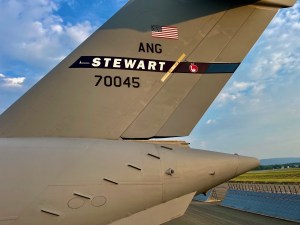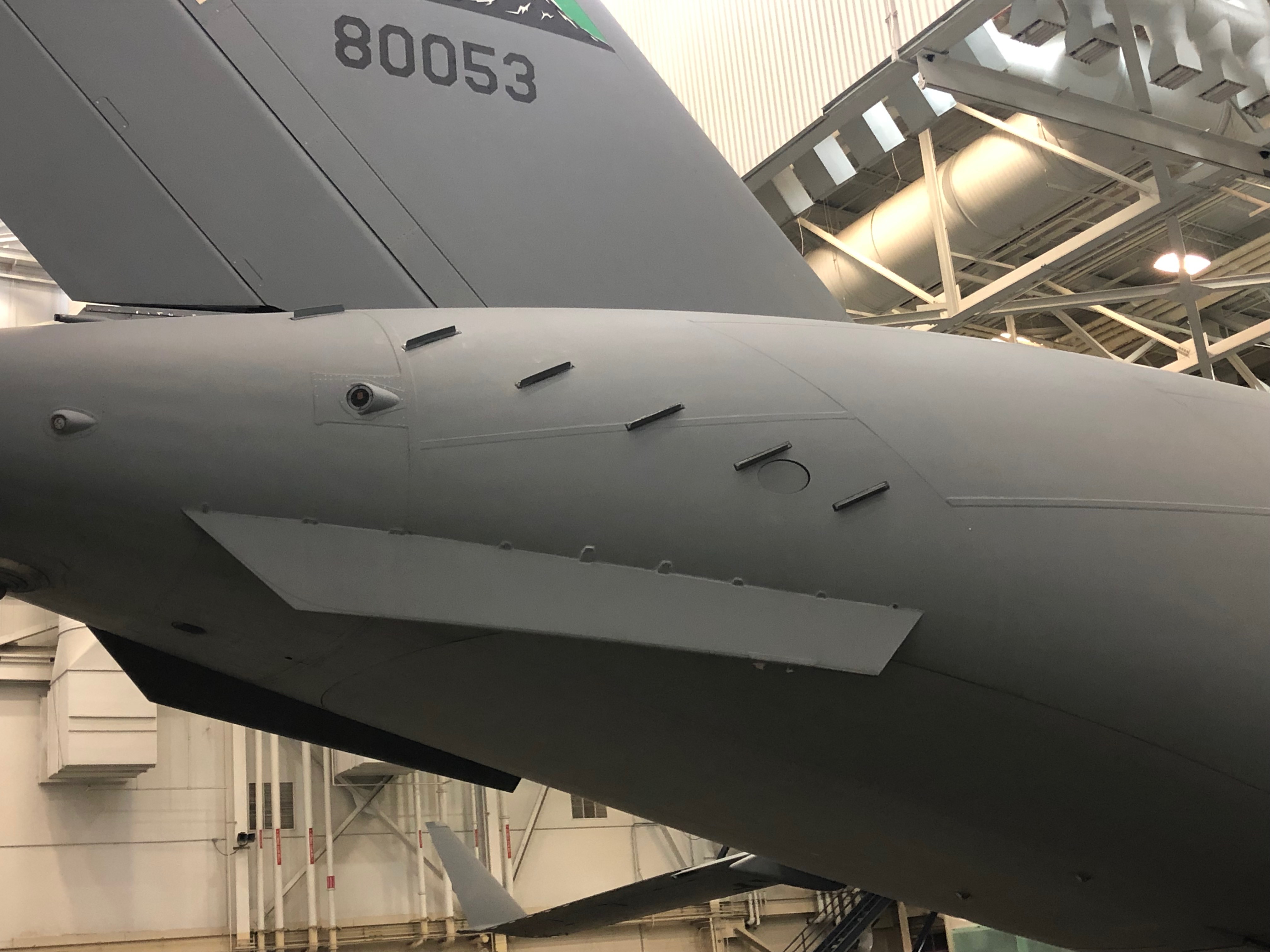After years of testing and research, the US Air Force’s microvane program is entering the final stage of evaluation before being employed across the C-17 Globemaster III fleet. The program is aimed at reducing fuel consumption and increasing payload capabilities.
On January 14, the Air Force announced that Air Force Operational Energy and Air Mobility Command have entered the final phase of evaluation for the Microvane drag reduction technology.
Microvanes are small, 3D-printed devices measuring roughly 4 x 16 inches, designed to reduce drag on aircraft. These sleek, blade-like devices are attached to the rear exterior of C-17s using a strong adhesive bonding.
Aircraft fitted with microvanes show a notable one-percent reduction in drag and fuel consumption compared to their unmodified counterparts.
This breakthrough initiative has undergone extensive research and testing over several years and has already gained approval from the US Army for use in paratrooper airdrop operations.

The Air Force Research Laboratory (AFRL) started developing the technology in 2014, and the process of adapting microvanes to C-17s began in 2015. In October 2023, the Department of the Air Force initiated the final phase of flight testing, which included air refueling and assault strip operations.
Notably, the aircraft used in these tests were fitted with microvanes, marking the first permanent technology installation within the C-17 fleet. That aircraft is currently stationed at Stewart Air National Guard Base.
At present, six aircraft have been modified for the Logistics Service Assessment (LSA), which is the final step before full fleetwide deployment.
The six-month LSA, set to begin after the last two aircraft are modified at Charleston Air Force Base this month, aims to pave the way for expanding the use of microvanes across the entire C-17 enterprise, according to the service.
Lt. Col. Eric Durkins, Commander of the 105th Aircraft Maintenance Squadron at Stewart Air National Guard Base, said, “The Microvanes initiative combines Stewart’s efforts to modernize Mobility Air Forces with innovative mission-ready Airmen.”
Durkins added, “We paired up with Memphis ANGB, which increased process knowledge across both wings. Our maintainers, working side by side with the engineering team from the start of this project, helped develop the installation procedures for the C-17 enterprise. The aircraft has supported our worldwide missions now for over a year without an issue, to include an AOR deployment.”
Drag-Reducing Microvanes
The US Air Force highlighted the microvanes as a prime example of modern technology being integrated into older aircraft. These fin-shaped structures are attached to the rear fuselage of the C-17 Globemaster III, targeting an area that traditionally experiences high drag due to the upswept fuselage design needed for the rear cargo door. A study by Lockheed Martin suggests that microvanes effectively reduce this drag.
During flight, the microvanes enhance fuel efficiency and extend the aircraft’s mission range by minimizing aerodynamic drag caused by the fuselage’s upswept section.
Once deployed across the entire C-17 fleet, including those of the Air National Guard and Air Force Reserve, the low-cost microvane technology will serve as a force multiplier, improving mobility support for high-demand mission requirements.
This innovation has attracted interest from international partners, including the United Kingdom, who are looking to adopt the modification for their own C-17 fleets.
The technology is expected to deliver a significant return on investment, with fuel cost reductions projected to save the Department of the Air Force over US$14 million annually.

The improved operational capabilities also reinforce the strategic advantage in maintaining readiness. Roberto Guerrero, Deputy Assistant Secretary of the Air Force for Operational Energy, Safety, and Occupational Health, noted that every gallon of fuel saved enhances operational readiness.
He added that incorporating modern technologies like microvanes into legacy aircraft cuts fuel costs and bolsters the Air Force’s competitiveness in the era of Great Power Competition.
As logistical challenges and extended mission distances become increasingly relevant in the Indo-Pacific region, where China poses a growing threat, reduced fuel consumption due to microvanes becomes a critical strategic advantage. This technology helps ensure the resilience of supply chains and strengthens operational capacity in contested environments.
Microvane technology has been installed on some Canadian Armed Forces aircraft. The US Air Force aims to further validate this concept, with plans to potentially expand it to commercial aircraft and other military platforms, such as the C-17, KC-135, and future vertical lift systems.
- Contact the author at ashishmichel(at)gmail.com
- Follow EurAsian Times on Google News




